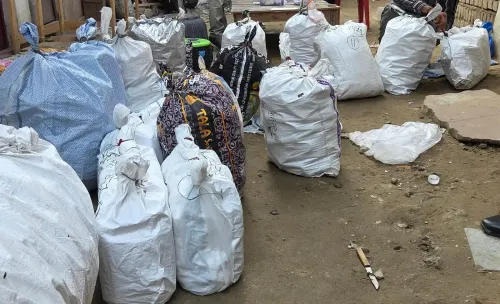Is Delhi Suffocating Under Toxic Smog as Air Quality Hits ‘Severe’ Levels?

Synopsis
Key Takeaways
- Delhi’s AQI reached a severe level of 372.
- Health risks associated with air pollution are significant.
- Prolonged exposure can exacerbate chronic health conditions.
- Environmental factors contribute to air quality degradation.
- Authorities are struggling to implement effective long-term solutions.
New Delhi, Nov 10 (NationPress) The national capital is once again facing perilous air pollution as a dense layer of smog envelops Delhi and its neighboring NCR regions.
Data from the Central Pollution Control Board (CPCB) indicates that Delhi’s average Air Quality Index (AQI) reached 372 at 7 a.m. on Monday, categorizing it as ‘severe’, which poses significant health risks for the community.
Various areas in the city recorded AQI levels ranging from 300 to 400, reflecting extremely poor to severe air quality conditions. The situation is similarly grim in nearby regions, with Faridabad at 312, Ghaziabad at 318, Greater Noida at 325, Gurugram at 328, and Noida at 310, all classified within the ‘very poor’ to ‘severe’ range.
Environmental specialists caution that prolonged exposure to such contaminated air can result in respiratory ailments, eye irritation, and exacerbation of chronic lung and heart diseases. Numerous residents have reported experiencing breathing difficulties as well as irritation in their eyes and throats while the smog persists throughout the day.
In addition, Delhi-NCR is also experiencing an early winter chill, with temperatures dropping to 11 degrees Celsius, which is 3.3 degrees below the normal average, while daytime temperatures remain around 27–28 degrees Celsius. The India Meteorological Department (IMD) predicts clear skies along with cold winds gusting at speeds of 15–20 km/h, making mornings and evenings especially brisk.
Meteorologists link the deteriorating air quality to a mix of low wind speed, decreasing temperatures, and rising humidity, all of which trap pollutants near the ground. The ongoing stubble burning in adjacent states is also exacerbating the toxic haze.
Despite continuous efforts from authorities to mitigate pollution through vehicle restrictions, construction bans, and the implementation of anti-smog guns, the national capital remains in a struggle for clean air. Health experts have advised residents, particularly children and the elderly, to refrain from outdoor activities and to wear N95 masks when going outside.
As Delhi-NCR confronts its annual air pollution crisis, residents remain hopeful for stronger winds or rainfall to offer some relief from the oppressive smog.









